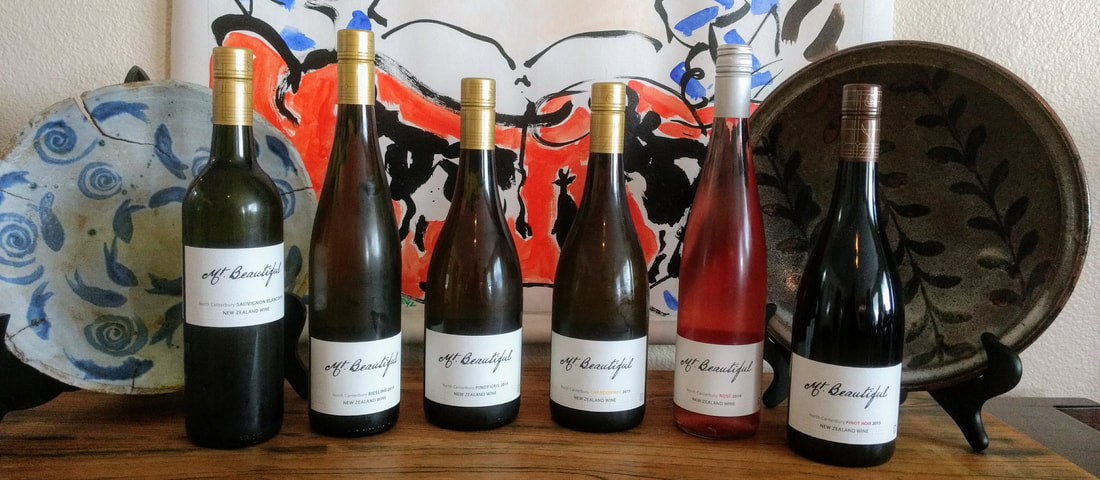|
New Zealand is the epitome of ‘New World’ wine; innovative, eager, fresh and adventurous. Blazing new trails is nothing new in the world’s most southerly wine region. ‘Noble grapes’ (vitis vinefera) made their first appearance almost 100 years ago, in 1819, thanks to Church of England missionary Rev. Samuel Marsden, who planted vines on the North Island. The first wines, however, were created by James Busby, known as the ‘Father of Australian Wines’, thanks to his importation of vine cuttings from France and Spain. When he was posted to New Zealand in 1833, he brought a selection of the vines and produced his first vintage in 1836. For decades, New Zealand’s most prevalent variety was an American grape, Isabella, that produced mostly sweet and fortified wines for local consumption. By the 1960’s and 70’s, vineyards began to expand to cooler regions and these obscure varieties were replaced with higher quality vinifera. One of the biggest influences occurred in the 1980’s, thanks to a young, government viticulturist by the name of Dr. Richard Smart. His bold, new ideas centered around ‘canopy management’ (the canopy being the leaves of the vine) and how it could be utilized to balance the growth of the plant and control yields. These ‘modern’ techniques are now commonly implemented around the wine-world. Vineyard site selection became more important and many growers were drawn to the Southern Island with its cooler climate. New Zealand wines began to rise in quality and quantity, making export, especially of their trademark Sauvignon Blanc, a reality. Today, vines are planted in 9 growing regions on both the North and South Islands. While officially in a temperate climate zone, the entire region is subject to huge maritime influences. The oceans moderate the temperatures, but also bring moisture, humidity and winds like the strong, westerly ‘Roaring 40’s’. For this reason, the majority of the vineyards on the South Islands are planted on the gentle, undulating, western slopes of the Southern Alps, a chain of 18 high mountain peaks that form the ‘spine’ of the island. The mountains shield the vines from extreme winds, giving the area a long, dry growing season with plentiful sun. The region of Canterbury/North Canterbury has been acclaimed by Decanter Magazine, as‘ the center of the finest Pinot Noir in the Southern hemisphere.’ yet it is still unknown by many wine lovers. Thanks to Mt. Beautiful Winery, that is all about to change. In the early 2000s, New Zealand native and renowned economic scholar David Teece, went in search of an ‘off the radar’, unique spot where he could start a vineyard and return to his family farming roots. In true, pioneering spirit, he finally located four farms in North Canterbury. The land was a mix of soft slopes and steep hills, with gullies and flats and a myriad of soil types. The farms lay in the shadow of Mount Beautiful. Vines, an array of 30 different clones matched to the individual terroir, were planted in 2003 through 2005. Sauvignon Blanc is the most prolific and planted in the cooler, northern blocks, while Pinot Gris enjoys the warmer, north facing hills of silt and clay. The first variety to be bottled was Riesling, also planted in the higher elevations and sheltered by neighboring pine forests. Chardonnay joined the portfolio in 2013, but it’s the Pinot Noir, nestled in the warmer, southern sections, that really embody what Mt Beautiful is all about.. At a recent event, I had a chance to sample some of the latest vintages and enjoy a few perfect food pairings.
2016 Mt Beautiful Sauvignon Blanc Not your typical ‘grassy, kiwi’ New Zealand take, but a more sophisticated and elegant, Bordeaux style. A small portion was barrel fermented, lending a nice balance between soft mango and ripe, tropical nuances and the slightly zesty kumquat notes on the finish. The pairing was a blueberry, nectarine and cream cheese galette, which accentuated the fruit character of the wine. 2015 Mt Beautiful Pinot Gris Classic stone fruit aromas of peach and pear met with fresh cut hay and white florals that lingered through to the surprisingly full finish. Seeded whole-wheat crackers topped with chèvre and apricot preserves were a pitch perfect pairing. 2015 Mt Beautiful Pinot Noir More Old World than New, with raspberry and dark strawberry notes, tinged with fresh thyme, fresh forest floor and light toast notes. Very easy to drink as an ‘apéro’ wine but food friendly, too. Paired nicely with Sweet Peppers stuffed with a herbed cream cheese. Disclaimer: Wines were provided for review by the producer but the reflections, observations and opinions are mine alone.
1 Comment
10/10/2017 08:40:43 am
What a beautifully written and informative post! I especially appreciated the background info on New Zealand's beginnings in wine growing.
Reply
Leave a Reply. |
AuthorHilarie Larson is a wine writer, and educator, who loves nothing more than traveling to vineyard and food destinations. Join her as she shares some of her experiences on the wine roads. Archives
October 2017
Categories
All
|
"In water one sees one's own face; But in wine, one beholds the heart of another." An Old French proverb






 RSS Feed
RSS Feed
